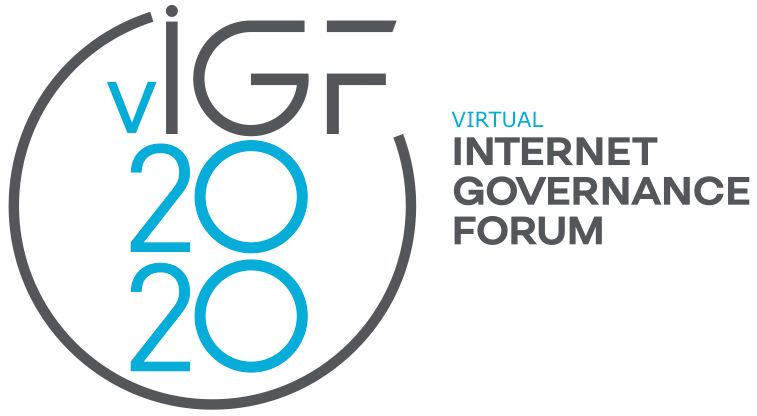Best environmental practices across the internet value-chain
16 Nov 2020 09:30h - 11:00h
Event report
The session presented concrete illustrations of best practices developed to increase the environmental efficiency of each block of the Internet value-chain, including networks, data centres, devices, and services.
Ms Anaïs Aubert (Deputy Head of Economic Analytics of Digital Unit, Arcep) noted that Arcep does not question that ICT can have positive consequences for the environment, but it still believes that several ICT practices must be improved. Aubert underlined that the ICT sector uses 8% to 10% of total global energy consumption and produces 2% to 4% of global carbon emissions. Moreover, ICT emissions could increase up to 14% of global emissions by 2040. Digital devices are the main source of the digital environmental effects. To produce a microchip, 22kg of materials are necessary. The useful life of a computer has been reduced from 11 years to 4 years in the period between 1985 and 2015. Innovative solutions are necessary to meet the UN 2030 environmental agenda targets.
Ms Ruiqi Ye (Climate and Energy Campaigner, Greenpeace) mentioned that Greenpeace has focused on projects related to data centres in China, particularly on their potential to use renewable energy in the next 10 years. In 2019, Greenpeace began to trace the growth of carbon emissions by the ICT sector in China, a sector that still relies only on coal. However, China does plan to be carbon neutral by 2060. The challenge is to combine low carbon emissions with the exponential growth of the ICT industry. Greenpeace has released two reports on the issue, with several conclusions. First, Greenpeace concluded that the data centre sector consumes 161 Kilowatts per hour. Although this number might not be as high as that in the cement sector, it has increased by 66% from 2018 and 2020. Second, Greenpeace found that only the Chinn Data Group has made a 100% renewable energy commitment. However, several companies have increasingly bought renewable energy without making any public commitment; Alibaba was one of these companies. Greenpeace is also hosting capacity building workshops to bring to China the experience of foreign companies that already use renewable energy. In sum, corporate action is crucial to the achievement of carbon neutrality goals. In this regard, Amazon and Apple have made 100% renewable energy commitments. These actions have provided motivation for local companies to do the same. This interaction of global and local has been positive to reduce carbon emission.
Mr Paolo Gemma (Chairman of Working Party 3 ICT and Climate Change, ITU) highlighted that the ITU has updated its best practices guidance for data centres. Currently, the focus is on the circular economy, in which the ITU promotes the production of equipment with a longer life and that is more recyclable. Recently, the ITU released a series of documents setting targets for the ICT sector aligned with the Paris Agreement. Also, the ITU has made available several documents with guidelines to reduce emissions on the manufacturer side. These guidelines particularly focus on energy efficiency and renewable energy. In addition, the ITU has developed a framework for countries to integrate national climate change adaptations that will address climate change at the local level. The ITU is also supporting some countries in implementation of legislation regarding e-waste. Aubert mentioned that having an agreement between all ICT sectors is challenging.
Ms Agnieszka Skorupinska (Senior EU Affairs Advisor, Vodafone) stressed that Vodafone believes that 5G can change the future in a positive way. In taking a global approach to emission and e-waste, Vodafone expects to use 100% of renewable energy in Europe by July 2021, while in Africa by 2025. In the past year, energy consumption remained flat despite a data traffic increase of 49%. The company also committed to reduce their consumers’ carbon emission by 350 points from 2020 to 2030. Finally, Vodafone launched the ‘Red loves Green’ initiative, which establishes an ecofriendly consumer culture.
Mr Gauthier Roussilhe (Researcher and Consultant, Independent) focused on how the environmental consequences of the ICT sector are increasingly moving from the manufacturer side to the user side. For example, 1.3 billion pieces of equipment are shipped to France annually. This consumption demands an energy consumption increase, even with improvements on the manufacture side, according to a EU Commission paper. Technical improvement does not mean energy efficiency when the entire ICT ecosystem is considered together. Rousilhe believes that stakeholders must focus on how the digital ecosystem should operate if we are to stabilise world temperature increases at +2C. Currently, the entire ICT ecosystem as whole is not aligned with the Paris agreement. Despite all technical improvements, a huge gap still exists between current energy consumption and what it should be in 2030. Rousilhe believes that we are still not going in the right direction by shipping more than one billion ICT devices only to France.
Related topics
Related event

